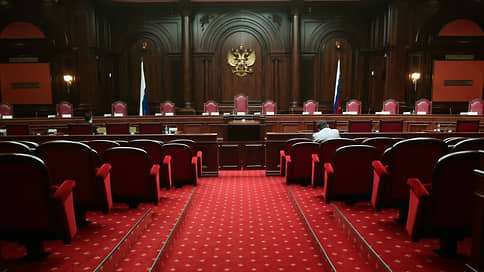How will US trading partners answer the introduction of Trump’s duties on imports

The reaction to raising the United States imports from other countries was not long in coming: on Friday, April 4, a number of states announced plans that fit into a classic list of shock reactions. A number of countries, including Vietnam and Turkey, announced hopes for negotiations, others followed the path of response measures-like China, from April 10, raising import duties on American goods to 34%, there are promises of concessions and the intentions to rebuild trade with the country through “transit” jurisdictions with low barriers, and a significant part of the economies still occupies a dietary position. Meanwhile, the discussion about further economic policy also unfolded within the United States: President Donald Trump publicly argues with the head of the Federal Reserve System (Fed) Jerome Powell about the priorities of the actions of the American Central Bank.
On Friday, US trading partners issued a number of statements about their actions after the US introduction duties on imports from other countries. Thus, the largest trading participant with the United States, China, who previously announced the countermeasures, presented specific solutions on April 4: the introduction of additional duties of 34% for all goods from the United States from April 10 (one of the largest suppliers to China with shares in the total import of the country of 6.3%). The Beijing called for Washington to “immediately cancel unilateral tariff measures” and resolve trade disagreements through consultations – while Beijing filed a lawsuit in the World Trade Organization (which, however, would not have a quick result, since the work of the WTO appellation body remains blocked by the United States). Donald Trump reacted to the statement of the Chinese authorities, calling him a « wrong decision » and the result of « panic, which they cannot afford. »
Individual states, however, look at the situation optimistic – Philippines They expect to increase export to the United States, using the “advantage in the form of a lower tariff rate” compared to ASEAN neighbors. Uzbekistan It also considers it possible to increase export of textile products to America.
Others hope to resolve the issue through negotiations, in particular Vietnam.
Hanoi notes that the customs rates within the framework of the most favorable regime used to import from the United States are on average 9.4%, and therefore the mirror tariff of 46% “unfair”. Already on April 4, a telephone conversation was held between Donald Trump and the Secretary General of the Central Committee of the Communist Party of Vietnam, Lama – Hanoi is ready to discuss a decrease in duties to zero for goods imported by the United States, if the same bet is applied to Vietnam goods.
CambodiaAccording to CNN on April 4, “trying to promote the import of goods from the United States, immediately reduces the maximum rate of 35% to the 5% rate used in 19 categories of goods from the United States” (we are talking about motorcycles, cars and some agricultural goods). At the same time, in the PNUP, they plan to request negotiations with the US on the introduction of duties. Türkiye And he completely hopes to “discuss” with the United States the possibility of canceling 10 percent additional duties against the background of an imbalance in bilateral trade in $ 2.4 billion in favor of the United States. IN South Africa They also intend to achieve the abolition of new tariffs and at the same time look for « new sales markets for the products produced in South Africa. »
Recall that on the night of April 2 to April 3, US President Donald Trump announced the introduction from April 5 10% for imports from 185 countries (among them – Uzbekistan, Turkey), and from April 9, the increased “mirror” duties from states that used as -imperial trade restrictions in trade with the USA. Thus, a tariff of 49%was introduced for imports from Cambodia, 46%of Vietnam, from China – 34%(taking into account previously taken measures, the total duty will reach 54%), 32%, South Africa – 30%from Taiwan, 20%(20%from the European Union (20%(See “Kommersant” from April 3).
On April 4, a fundamental discussion unfolded between Donald Trump, the initiator of increasing import tariffs (according to his team, it stimulates the return to the United States and active import substitution, reduce the foreign trade deficit and budget deficiency and will subsequently lead to economic prosperity), and concerned risks of overclocking due imports and ruptures of the supply chains by the head of the Federal Reserve System (Fed) Jerom Powell. According to the Fed, the duties “with a high probability will cause at least a temporary” rise in inflation, and can also weaken the economic growth of the United States. Donald Trump has already urged the Fed to “stop playing politics” and reduce interest rates, but in Fedi -reserve are not yet ready for this, noting that they are faced with “extremely uncertain prospects”.
As Kommersant previously noted, this is the main internal dilemma of the USA: a decrease in the Fed’s bets will maintain economic growth and adaptation to new conditions, but will weaken the dollar, making deliveries to the United States less attractive.
Increasing the Fed’s rates to maintain the target level of inflation (2%) can aggravate the inhibition of the economy due to the growth of trade barriers.
In the case of a long preservation of increased duties, the search for new sales markets and redistribution of commodity flows will become relevant for many countries, primarily Asian, including China and Vietnam. The European Union is already afraid of a massive overflow of PRC goods to its markets. According to Financial Times, in Brussels, the introduction of high duties on Chinese products is not excluded (previously the EU introduced a duty of 35% for electric cars from the PRC). In the Russian Federation, the hazard of the redistribution of flows has not yet been seen. For example, the Deputy Prime Minister of the Russian Federation Alexei Overchuk on April 4, reported that, as part of an agreement on free trade against the backdrop of high duties of the United States, Vietnam may enter the EAEU market.
The senior researcher at the Institute of International Economics and Finance, the Ministry of Economy, Vladimir Sedalishchev, distinguishes “two poles” among various scenarios – these are symmetrical answers and stabilization of increased tariffs with a gradual rollback (then a significant change in the structure of trade should not be expected) or the escalation of the trade war. Then the situation becomes “extremely poorly predicted”, and readiness for the cooperation of countries in the answer to the actions of the United States is not clear. The fact that China introduced return tariffs, believes the leading researcher at the International Foreign Trade Studies of the RANEPA, Alexander Firanchuk, means “the implementation of the worst scenario of the trade war”: the risks of slowing down world trade and production are growing noticeably, which will also lead to a decrease in demand for raw materials – the basis of Russian exports.
As the director of the Institute of Trade Policy of the Higher School of Economics, Alexander Daniltsev, notes, if the duties are long and large -scale, there are risks of secondary wave of protectionism and aggravation of sales problems in the global economy, which means that exported oriented countries – China, India, Yuva, and the Russian Federation will have losses. In his opinion, cooperation can be intensified under the framework of free trade agreements between countries that have fallen under restrictions. “Mechanisms of bypass” through transit countries are also likely – this, the expert believes, will depend on US policy: “It is possible that loopholes will be left for sensitive imports.” According to Alexander Firanchuk, an increase in the cost of export in the United States for the countries of Southeast Asia may also lead to the need to transfer production to third countries.
It is possible that Alexander Daniltsev admits, products that have not found sales in the US market will be redirected to the Russian market. This will lead to strengthening foreign competition and can adversely affect local enterprises. However, such a risk, according to Alexander Firanchuk, is “difficult to call paramount”: the increase in imports is difficult to transaction costs, as well as the fact that China already accounts for 40% of supplies to the Russian Federation (the expansion space is not so great), in addition, a very likely weakening of the ruble will reduce the attractiveness of the Russian market.








